Kristine Hoffmann, Post Doctoral Researcher, University of Maine
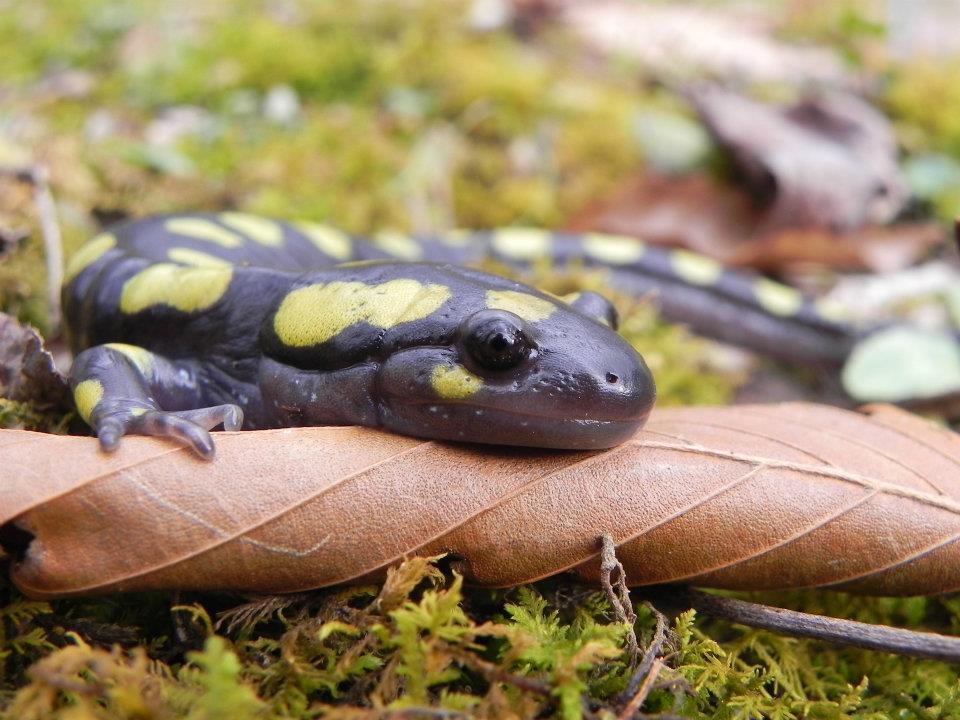
Spotted Salamanders are rarely seen above ground outside of their short breeding season.
What is the best way to see adult Spotted Salamanders and Wood Frogs?
There are a few good ways to view these animals, and it helps if you know when Big Night will be. Big Night is the first warm (above 40° F), rainy night of the year. It is the night when the air smells like mud for the first time and you start to find earthworms on the surface. Once it has been raining long enough, the ground will be saturated and the vernal pool amphibians will eager to breed. Most of the Spotted Salamanders (Ambystoma maculatum), Wood Frogs (Lithobates sylvaticus), Blue-Spotted Salamanders (A. laterale), and Unisexual Salamanders (A. laterale-jeffersonianum) will all migrate in one or a couple of nights – hence the name “Big Night”. They will only be in the pools for about 2 to 3 weeks, and if you miss this window you might have to wait another year to get your eyes on these cryptic animals. Big Night occurs in March in Massachusetts, between Mid-March and Early-April in Southern Maine, and in Mid-April here in the Greater Bangor Area.
Your first option to find adult vernal pool amphibians is to “road cruise” on Big Night. Wait until an hour after dark, then drive slowly down a forested road. Keep your eyes peeled and you may start to see leaping blurs (Wood Frogs) and sticks holding up their heads (salamanders). If you find a good spot, you may want to pull over and walk the road with a flashlight. You’ll find more small amphibians on foot than you will see from your seat, and you might be lucky enough to spot a Spring Peeper (Pseudacris crucifer) or a Four-Toed Salamander (Hemidactylium scutatum). Stay safe, wear light colors, keep your flashlight on, and move over for cars!
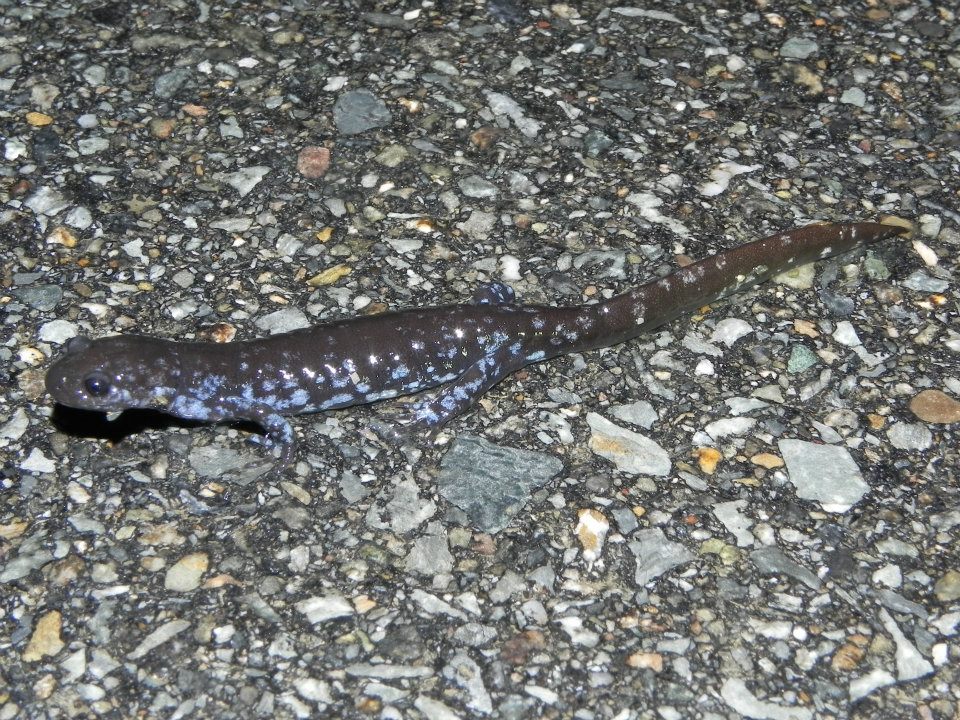
Blue-Spotted Salamanders tend to blend into the road, but can still be found while road cruising on big night.
If you know where a vernal pool is and have permission to go there after dark, then you might be in for a real treat. Plan a night-time walk to the pool either on Big Night or in the following few evenings. My favorite time to show off a vernal pool is the night after Big Night when there are plenty of animals but I get to keep my head dry. Once you reach the pool, turn your flashlight off. Count to 60, then turn your light back on and scan the bottom of the pool. Look for the moving yellow spots of Spotted Salamanders. When your beam shines on them, they will crawl under the leaves and hide, but if you turn off your light and wait they will come back out again. Skim you light across the surface to look for floating wood frogs. Then turn your light off again, and stand still – the Wood Frogs might start calling.
You can also visit the pools on sunny days during the breeding season. Wood Frogs love a sunny day, and can be heard “quaking” from quit a distance. They will become quiet as you approach, but if you stand still long enough they may return to their chorus right before your eyes. The salamanders will be hiding under the leaves during the day, but if you are lucky you may see one swim to the surface and take a breath.
What species are typically found in a vernal pool in Maine?
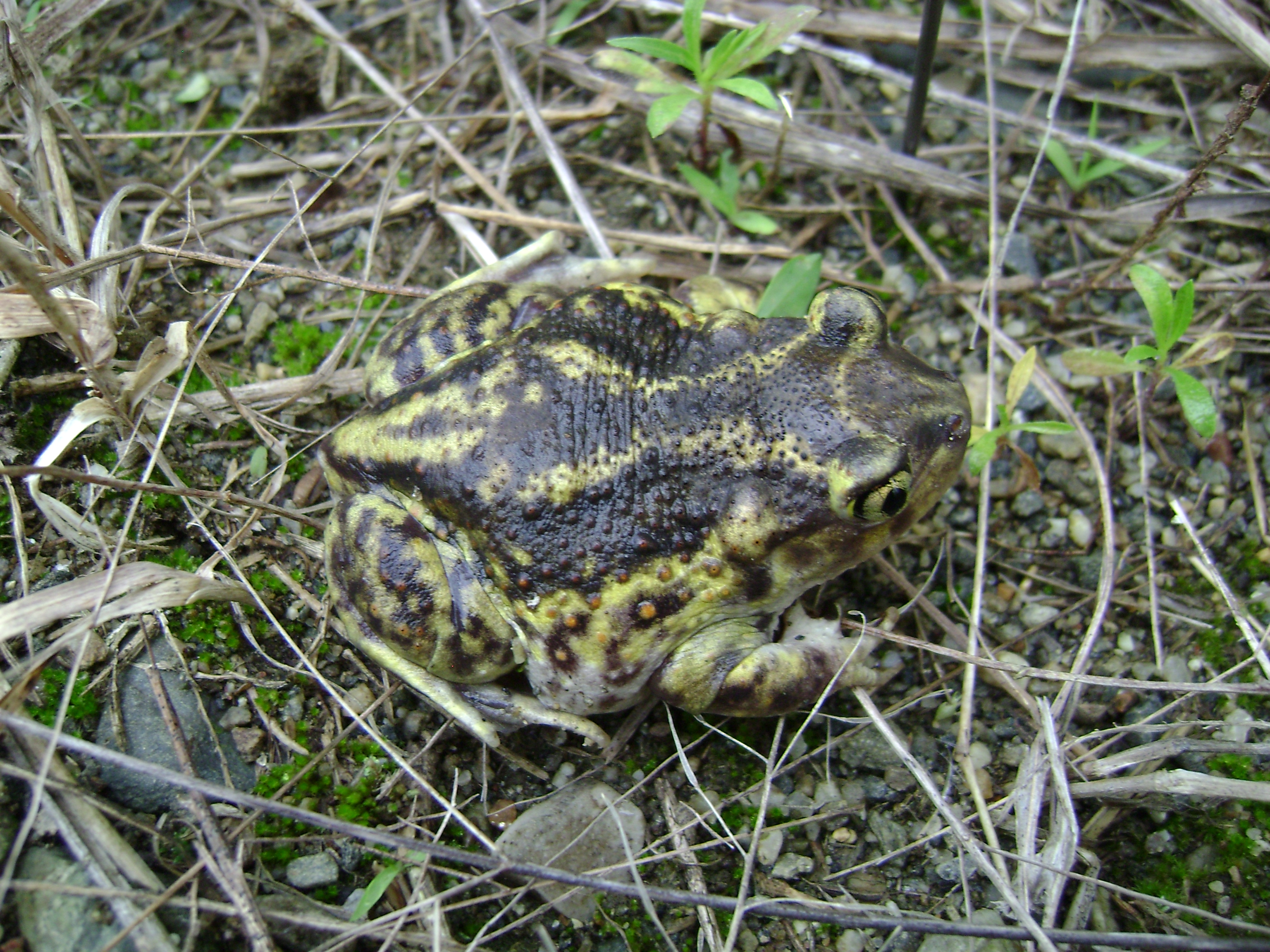
Eastern Spadefoot Toads spend most of their time buried in sandy soils. Photo by Dr. Kevin Ryan.
Vernal pools act as nurseries or feeding grounds for many specialized species of reptiles and amphibians. Wood Frogs (Lithobates sylvaticus), Spotted Salamanders (Ambystoma maculatum), and the Blue-Spotted Salamander complex (A. laterale and their unisexuals) are the “poster children” of vernal pools. Here is some information on the other venal pool amphibian and reptiles. (Marbled Salamanders, Jefferson Salamanders, and Eastern Spadefoot Toads don’t occur in Maine, but I’ll include them here for readers outside of the Pine Tree State.)
Marbled Salamanders (Ambystoma opacum) are found in New Hampshire and further south (South from my perspective here in Maine, that is). These are arguably some of the prettiest salamanders, with white blotches crossing over their black bodies. They are unusual among vernal pool amphibians in that they breed in the fall. The adults migrate to the dry (or somewhat dry) pool and mate. The females crawl under the cover of logs and tussocks, and then lay their eggs. They remain curled up in this nest until it fills with water and the submerged eggs hatch. By the time the Spotted Salamanders and Wood Frog eggs hatch in the late spring, the Marbled Salamander larvae are big enough to eat these other amphibian larvae.
Jefferson Salamanders (Ambystoma jeffersonianum) range from New Hampshire to Kentucky, and are Endangered in Ontario. These large chocolate-brown salamanders reach lengths up to 8 inches. They are another sperm-host species for Unisexual Salamanders, so identification of these animals may require genetic testing. Jefferson Salamanders need large forest patches, and are use pools at higher altitudes than their relatives, the Blue-Spotted Salamanders.
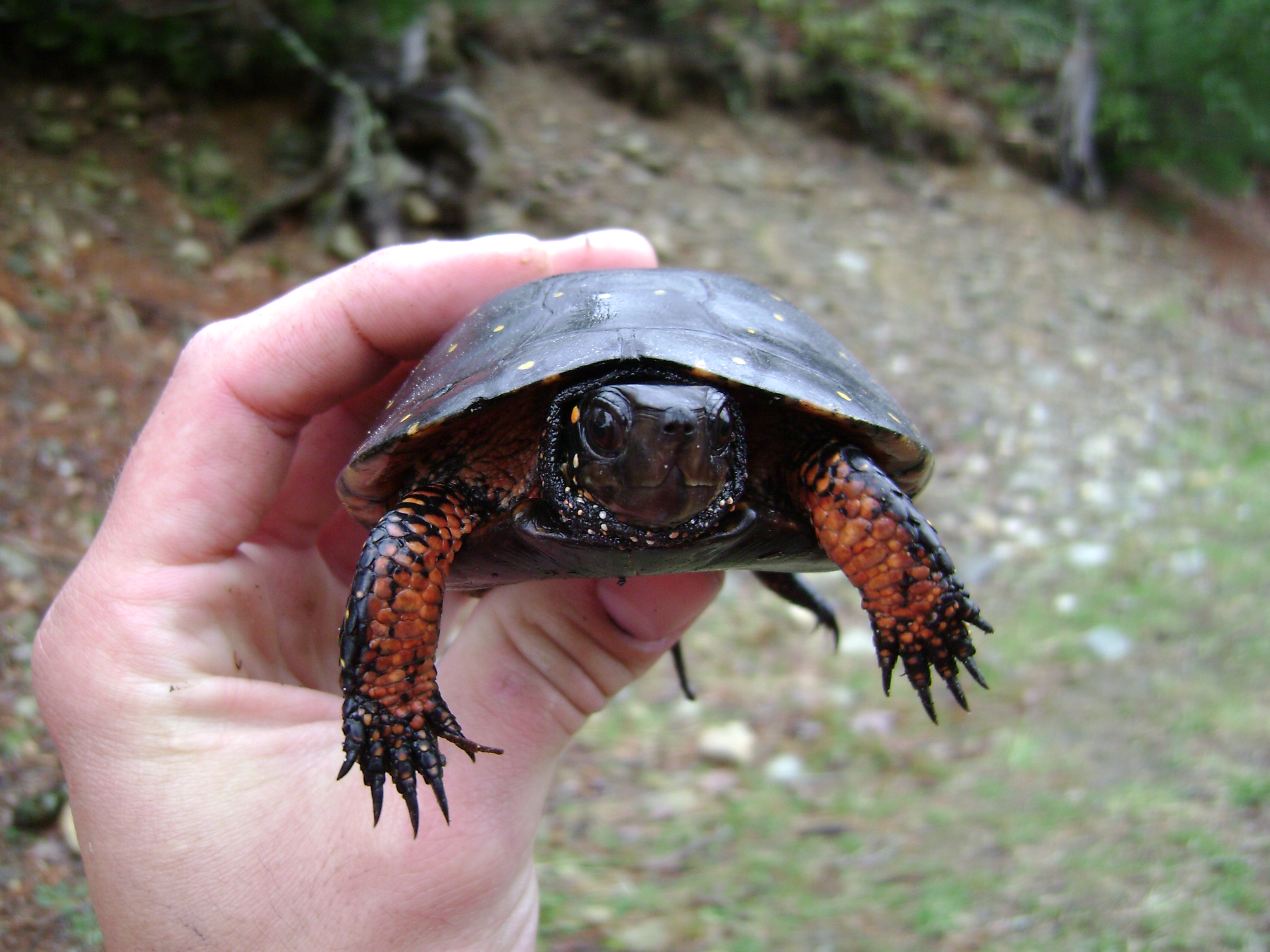
Spotted Turtles are black with yellow spots, and feast upon vernal pool amphibians eggs in the spring. Photo by Dr. Kevin Ryan.
Spotted Turtles (Clemmys guttata) range from southern Maine and Quebec to Florida. The shells of these tiny turtles only reach about 5 inches long, and are black with bright yellow spots. Spotted Turtles bask on sunny days, and spend the night buried in the bottom of the vernal pool. The feast on amphibian eggs masses in the spring. In the summer when the pools dry they leave, bury themselves under leaves, and rest (estivation – which is similar to hibernation but occurs in the summer). They return to the pool in the fall and sometimes they are seen crawling under the ice in winter.
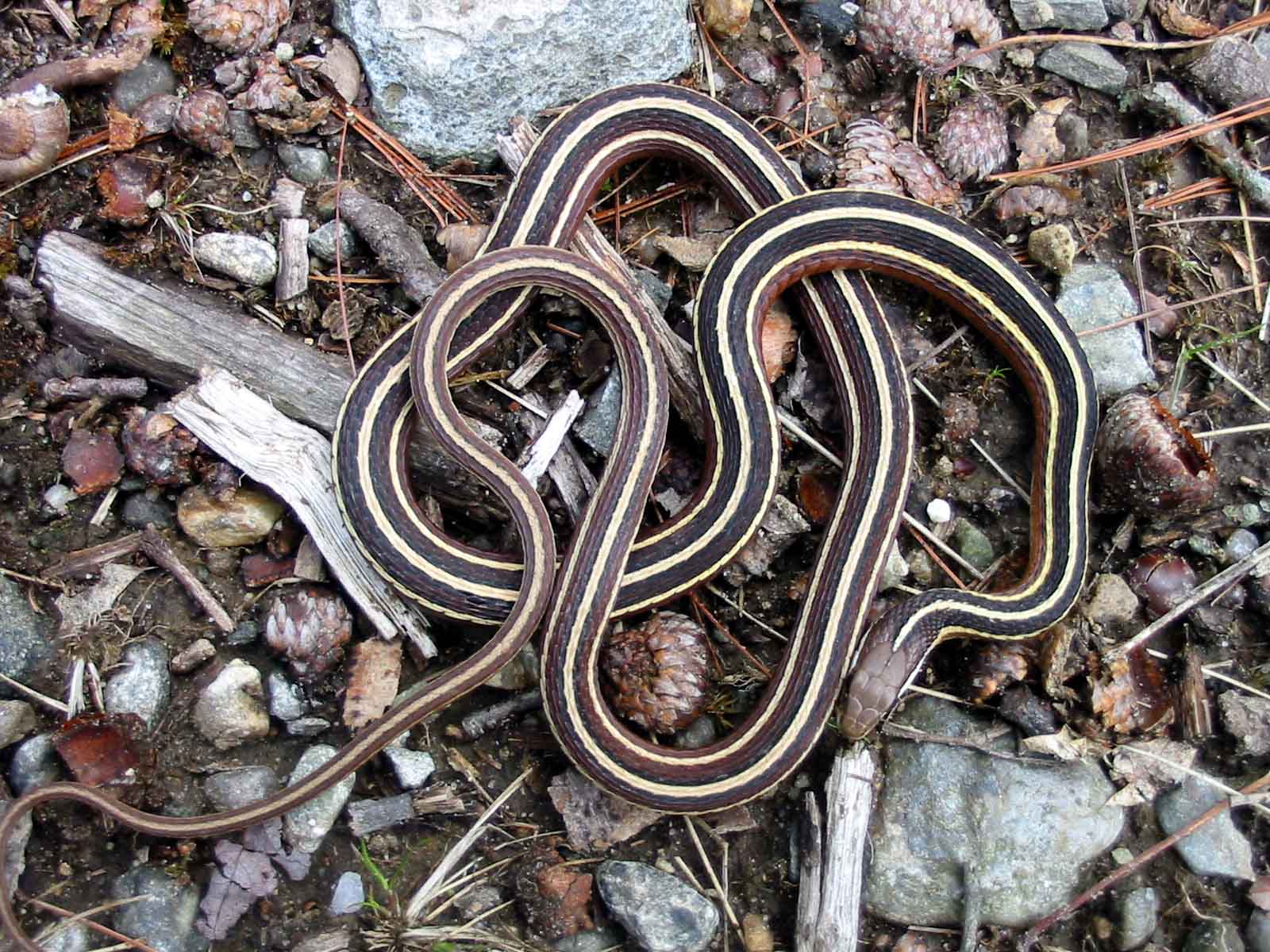
Ribbon Snakes are beautiful, harmless, and flee when approached. Photo by Dr. Kevin Ryan.
Ribbon snakes (Thamnophis sauritus) use vernal pools as feeding grounds, but also use other wetlands. They are small, slender snakes that only reach a foot or two in length. Ribbon Snakes are black to brown with yellow strips so they look similar to a Garter Snakes (T. sirtalis) but lack the checker patterns that Garter Snakes bear along their sides. Ribbon Snakes eat amphibians and invertebrates (and fish when they are not in a vernal pool). These harmless snakes will usually flee or hide before you reach the vernal pool, so they require some luck or skill to locate. They occur from central Maine to Florida and reach westward to the Mississippi.
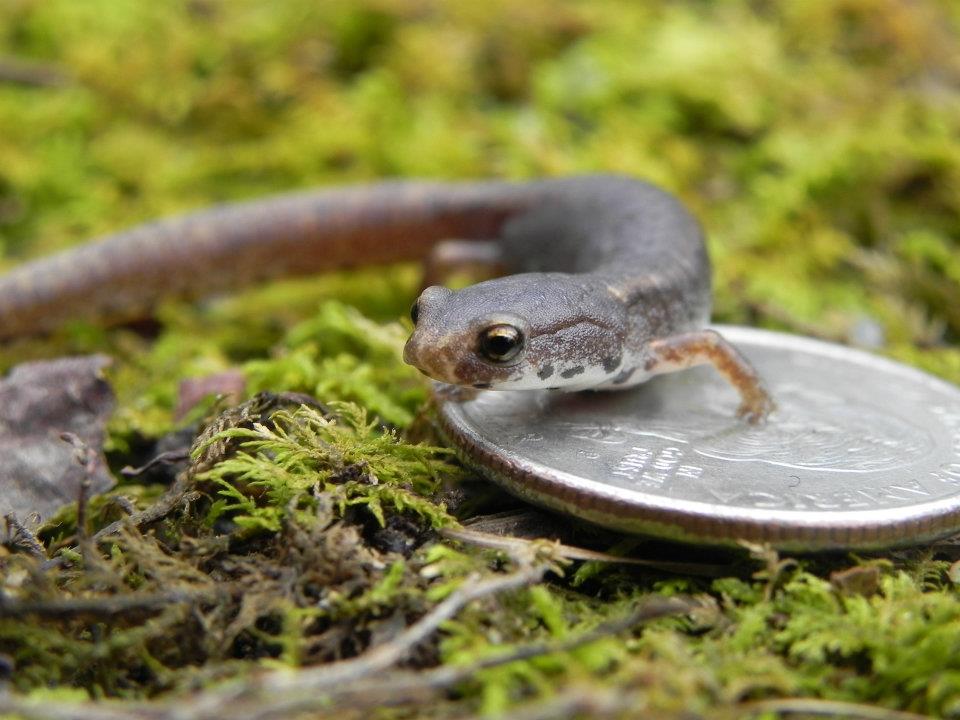
Four-toed Salamanders lay their eggs in the moss overhanging vernal pools.
Four-toed salamanders (Hemidactylium scutatum) are small (up to 4 inches) with brown to bronze backs, and can be identified by their white belly with black spots (think salt and pepper). Don’t pick them up by the tail, because they will break off. These salamanders breed in wetlands with abundant moss. The female will climb into the moss, lay her eggs, and stay with them until they hatch. The larvae wriggle through the moss, and fall into the pool below. This species ranges from Central Maine to Louisiana.
From Massachusetts to Florida, Eastern Spadefoot Toads (Scaphiopus holbrookii) breed in vernal pools. These strange frogs have some “warts” but lack the bumpy, dry skin of most toads (because, well, they are not in the toad family). They spend much of their time underground, buried in sandy soils. They breed during thunderstorms, and their tadpoles develop quickly (egg to hopping toadlet in as little as 4 weeks).
Eastern Newts (Notopthalmus viridescens), American Toads (Anaxyrus americanus), Green Frogs (Lithobates clamitans), Bullfrogs (L. catesbeianus), Gray Treefrogs (Hyla versicolor), Spring Peppers (Pseudacris crucifer), and Pickerel Frogs (L. palustris) will use vernal pools but generally need more permanent water to reproduce. We see a lot of juvenile Green Frogs and Bull Frogs at vernal pools in the summer, feasting on Wood Frog tadpoles and avoiding competition with adults of their own species.
Where do Spotted Salamanders go during the winter?
Spotted Salamanders and their relatives live under ground in burrows for most of the year, including the winter. The ground only freezes a few feet deep, so the salamanders simply go below the frost line to keep their bodies from freezing. Chipmunk holes are deep and make great winter homes for hibernating salamanders.
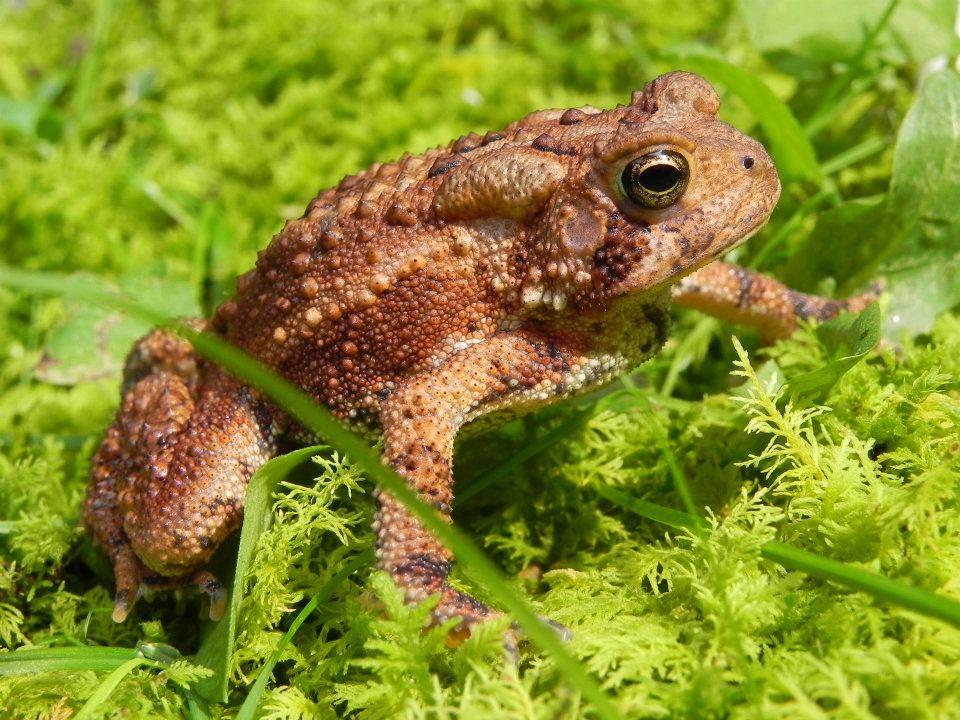
American toads may lay their eggs in vernal pools, but usually breed in more permanent wetlands.
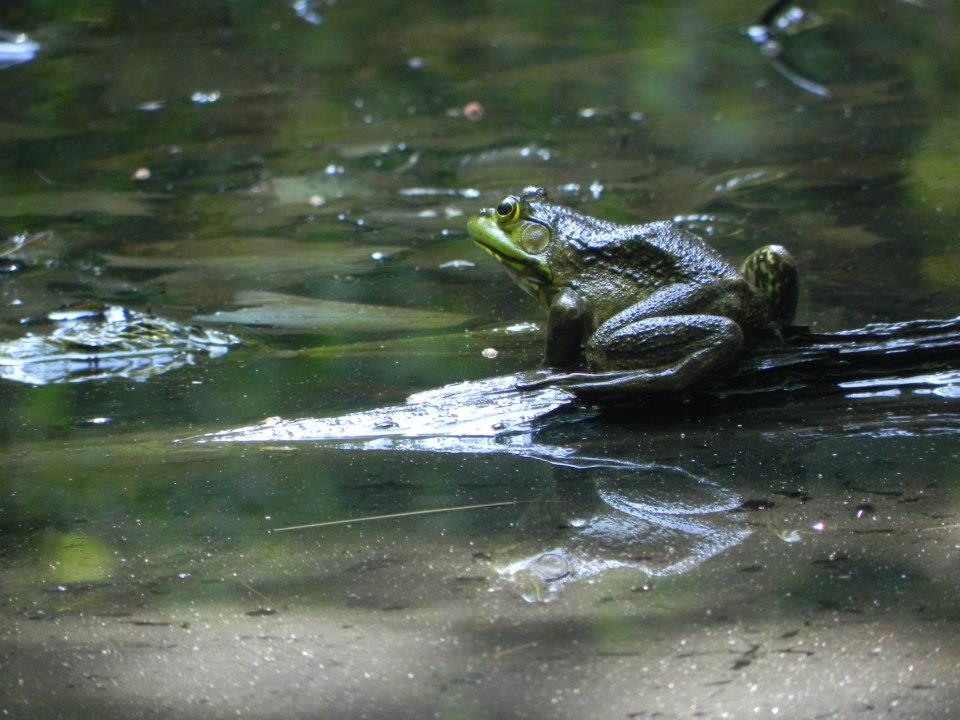
Bullfrogs come to vernal pools to feed on Wood Frog tadpoles and invertebrates.
